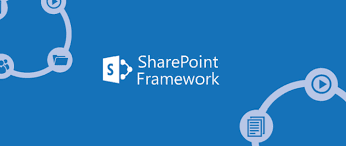
What is Sharepoint Framework (SPFx)
SharePoint Framework (SPFx) has emerged as a powerful development model that enables organizations to extend and customize SharePoint Online and SharePoint on-premises. With its support for modern web technologies and a flexible architecture, SPFx provides developers with a robust platform to build custom web parts, extensions, and applications. This article aims to provide an overview of SPFx, its key features, technical requirements, benefits, and use cases.
What is SPFx?
SPFx, short for SharePoint Framework, is a client-side development model introduced by Microsoft for SharePoint Online and SharePoint on-premises. It allows developers to create and deploy customizations using popular web technologies such as JavaScript, TypeScript, React, and more. SPFx promotes a modern development approach, delivering responsive and mobile-ready solutions that seamlessly integrate with the SharePoint user interface.
Key Components of SPFx:
1. Web Parts: SPFx enables developers to build reusable web parts, which are self-contained components that can be added to SharePoint pages. Web parts provide a flexible way to present specific data or functionality, empowering users to tailor their SharePoint experience.
2. Extensions: SPFx offers extensions to customize and extend the SharePoint user interface. Application customizers allow developers to inject scripts into all pages, enabling global customizations. Field customizers enable the customization of field rendering, while command sets empower the addition of custom actions to menus and toolbars.
When to Use SPFx:
SPFx is suitable for various scenarios, including:
- Building custom web parts to display specific data, visualizations, or custom functionality.
- Creating extensions to enhance the SharePoint user interface with additional features or customization.
- Integrating SharePoint with external systems and services using modern web technologies and APIs.
- Migrating existing customizations from legacy models (like SharePoint Add-ins or SharePoint Designer) to modern SPFx solutions.
Technical Requirements:
To get started with SPFx development, you'll need:
1. Development Environment: Install Node.js, Yeoman, and the SharePoint Framework Yeoman generator.
2. Code Editor: Choose a code editor of your preference, such as Visual Studio Code, to write and debug SPFx projects.
3. SharePoint Subscription: Obtain a SharePoint Online subscription or set up SharePoint on-premises for development and deployment.
Benefits of SPFx:
1. Modern Development Experience: SPFx embraces modern web technologies and development practices, allowing developers to leverage frameworks like React, Angular, or Vue.js. This enables the creation of visually appealing, responsive, and user-friendly customizations.
2. Cross-Platform and Responsive: SPFx solutions are designed to work seamlessly across different devices and screen sizes, ensuring a consistent user experience on desktops, tablets, and smartphones.
3. Secure and Isolated: SPFx solutions run in a secure and isolated context, preventing conflicts with other customizations or SharePoint updates. The framework employs the latest security practices and adheres to Microsoft's security guidelines.
4. Easy Deployment and Maintenance: SPFx solutions can be packaged and deployed to SharePoint Online app catalogs or SharePoint on-premises catalogs. Updates and maintenance are simplified, thanks to the use of a standard package model.
5. Integration with Modern SharePoint: SPFx solutions can leverage the capabilities of modern SharePoint sites, including modern lists, document libraries, and communication sites. This integration unlocks additional functionalities and improves the overall user experience.
Conclusion:
SharePoint Framework (SPFx) is a versatile development model that empowers organizations to extend and customize SharePoint Online and SharePoint on-premises. With its support for modern web technologies, SPFx enables the creation of responsive web parts and extensions, offering a seamless integration with the SharePoint user interface. By embracing SPFx, organizations can enhance productivity, improve user engagement, and tailor SharePoint.
Wanna learn more?
- The History of SPFx
- Official documentation






